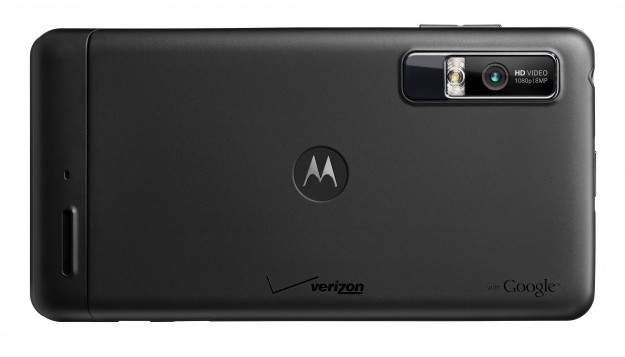
The Motorola Droid was the first true Android flagship smartphone, and it’s still loved and used by a lot of people around the world, especially developers and advanced users who load their own ROMs and overclock the processor, which easily goes to 1+ GHz, bringing the performance to the level of Nexus One, Evo 4G and even T-Mobile G2, with the only limiting factor being the amount of RAM (at 256 MB it’s pretty low even for Android 2.2 Froyo).
The second Droid was pretty much a minor improvement that brought a faster processor and more RAM, with the other specs being pretty much the same. But now, after several years, we finally see a true successor to the popular line: the Droid 3.
Unlike the Droid 2, the new Droid brings a lot of new stuff to the table compared to the first model. It has a completely new design, which looks pretty good, and reminds more of the first Droid, with the trademark lip and strict lines. There are differences, of course: the size is slightly bigger (because of the 4 inch display), the corners are rounded and the back cover is now plastic (but still sturdy) and pretty hard to remove.
The slider mechanism hasn’t changed much – it’s the same springless design, and it feels great to use it (but it gets a bit loose with time). The keyboard, on the other hand, is a completely revamped unit, with bigger, separate keys that are simply a joy to use – the tactile feedback is great and you can type very fast without even looking at it and without mistakes. It is comparable to the one on the T-Mobile G2.
The new display has stirred a lot of controversy: on one hand it has a qHD 960×540 pixels resolution, and at 4 inches it’s perfect for viewing anything from Web pages to movies, games and graphics heavy apps. On the other hand, it uses a technology called PenTile, which adds white subpixels for more brightness, while reducing the number of blue subpixels, which in theory should not degrade the image quality very much. Moreover, the subpixels are arranged in a different pattern than standard RGB LCDs.
In reality, the picture quality is a bit degraded, with green and yellow colors being slightly worse than usual, but the big problem seems to be the very visible pixel grids, which make the screen look pixelated and cheap, even if its qHD resolution. This problem has been present on a lot of newer HP and Acer laptops, with a lot of returns because people thought it’s a defect, but Motorola says that the trade-off is worth the 50% less power consumption for the screen.

While you won’t notice this in most day to day usage, it can be really annoying in the dark or when you’re standing relatively still and looking at photos or playing a game or video. That’s why I recommend that you see the screen in person before buying this phone. By the way, the Droid X2 and Atrix also use the same type of display, so you can take a look at those as well.
Moving on to the internal hardware, you’ll find that the new Droid uses a dual core TI OMAP 4 processor running at 1 GHz, which is complemented by the excellent PowerVR SGX540 graphics adapter (twice as fast as the older SGX530) and 512 MB of RAM – you might think that’s a bit on the low side, but in reality it’s more than enough for any apps, especially thanks to Android’s management system.
The phone has all the usual sensors you can think of, sans a NFC radio, but I don’t think that technology will take off anytime soon anyway. On the front you can easily spot the VGA resolution camera that is good for video calls, and on the back there’s an 8 megapixels snapper (and HDMI-output) for all your photo and video needs – it’s the same unit as on the XT720, and it’s great at both taking pictures and filming 1080p videos.

Another great thing about the Droid 3 is that it’s a global phone – it can work on CDMA networks (it ships to Verizon, after all) as well as use a SIM card for any GSM network worldwide. This is great news for anyone who travels or wants to get the phone unlocked from the US to be used in Canada, UK or any other country, and the price is pretty good at about $500, unlike the Galaxy S2, for example.
The Motorola Droid 3 is an excellent smartphone and would work well for anyone. If you like having a QWERTY keyboard, it’s practically the best choice at the moment, and the performance will not disappoint, either. It’s already available in the US and obviously, on eBay, with a Milestone 3 version coming to Europe in the following months, as well.



